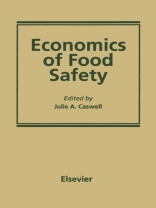Public concern about the safety and healthfulness of the food supply grew markedly during the 1980s. Numerous government, academic, interest group, and media reports questioning the adequacy of the food safety regulatory system formed the basis for this increase in concern. While public concern focused most directly on pesticide residues in food, scientists emphasized the risks of illness associated with microbiological contamination of food. Much additional attention was focused on the food supply as a result of the striking consensus on dietary recommendations that emerged in the late 1980s based on increased scientific knowledge of linkages between diet and health. Relatively little research on the economic aspects of food safety and nutrition issues had been conducted up to the mid-1980s. These aspects are complex. On the consumer demand side, they include consumers’ perceptions of the risks associated with particular food products, how demographic characteristics influence consumers’ processing of risk information and subsequent changes in food demand behavior, and the monetary value consumers might place on changes in the risk profiles of products. The economic benefits and costs associated with current food consumption patterns are a major determinant of demand for improved food safety and dietary change through government regulation. While a more complete picture of risks, benefits, and costs has been emerging recently, much is yet unknown.
Julie A. Caswell
Economics of Food Safety [PDF ebook]
Economics of Food Safety [PDF ebook]
Beli ebook ini dan dapatkan 1 lagi PERCUMA!
Bahasa Inggeris ● Format PDF ● ISBN 9789401170765 ● Penerbit Springer Netherlands ● Diterbitkan 2012 ● Muat turun 3 kali ● Mata wang EUR ● ID 4666614 ● Salin perlindungan Adobe DRM
Memerlukan pembaca ebook yang mampu DRM












